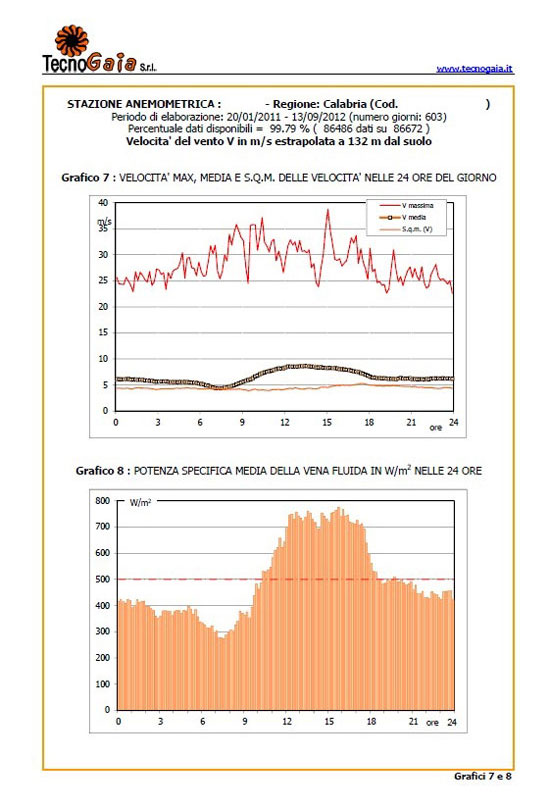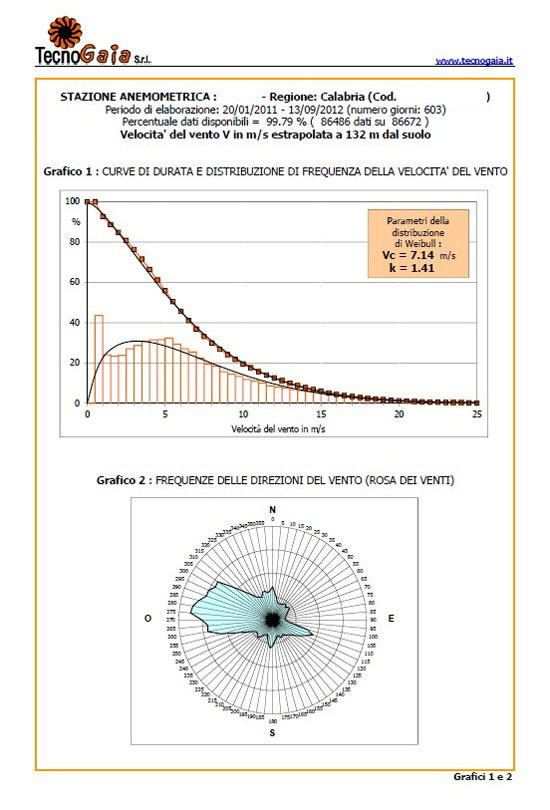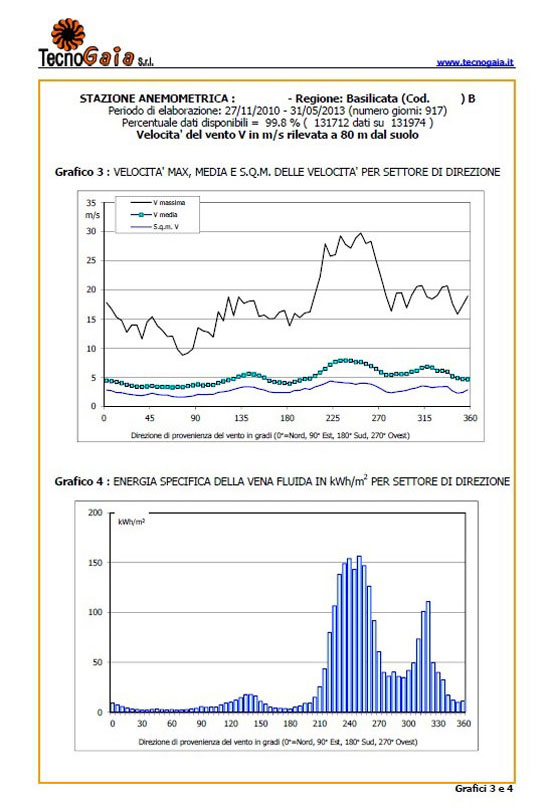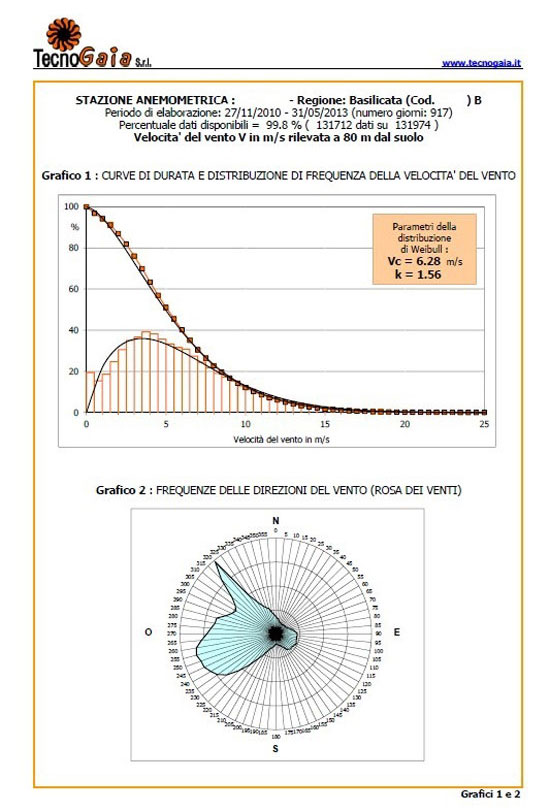Reading, decoding, validation and data storage
The activity includes the data transfer from the logger memory to Tecnogaia’s computers (reading), the data processing in text format (transcoding), the data analysis by comparison with simultaneous data of reference stations in order to consider the acquired data as valid and consistent (validation) and storing the validated data in a secure environment for a period of at least five years (storage). It is given evidence of transactions made through appropriate sheets archived within Tecnogaia’s offices, which will form part of the report of statistical analysis of data or sent to the Customer, on request.
Statistical processing (data analysis)
The activity includes a statistical analysis of wind data validated for the determination of the wind characteristic parameters, by means of programs of internal production tested by decades of experience.
Assessment of the long term wind regime by comparison with historical stations of the area
This activity, also called historicization, allows to assess the long term wind regime of a site (in the installation point of the wind mast), on the basis of comparisons and correlations with simultaneous data of historical stations (or stations that have average wind speeds from data series of a period of approximately a decade).
Assessment of expected energy production in the mast position
Disposing of wind data of a wind mast, it is possible, supplementing their duration curve with the power of a given wind turbine, determining the producibility of a wind turbine hypothetically positioned vertically over the point of measurement.
The process takes into account the air density, the gradient to the ground, measured or estimated, and can be applied for different types of wind turbine models. Depending the site orography it can be extended with low uncertainty to an area around the station.
Wind parameters calculation in order to preliminary evaluate the IEC wind classification of the site
In the absence of long-term wind data, the evaluation of the maximum gust in 50 years, which is typical for each site, is calculated using simulations on the basis of available data.








